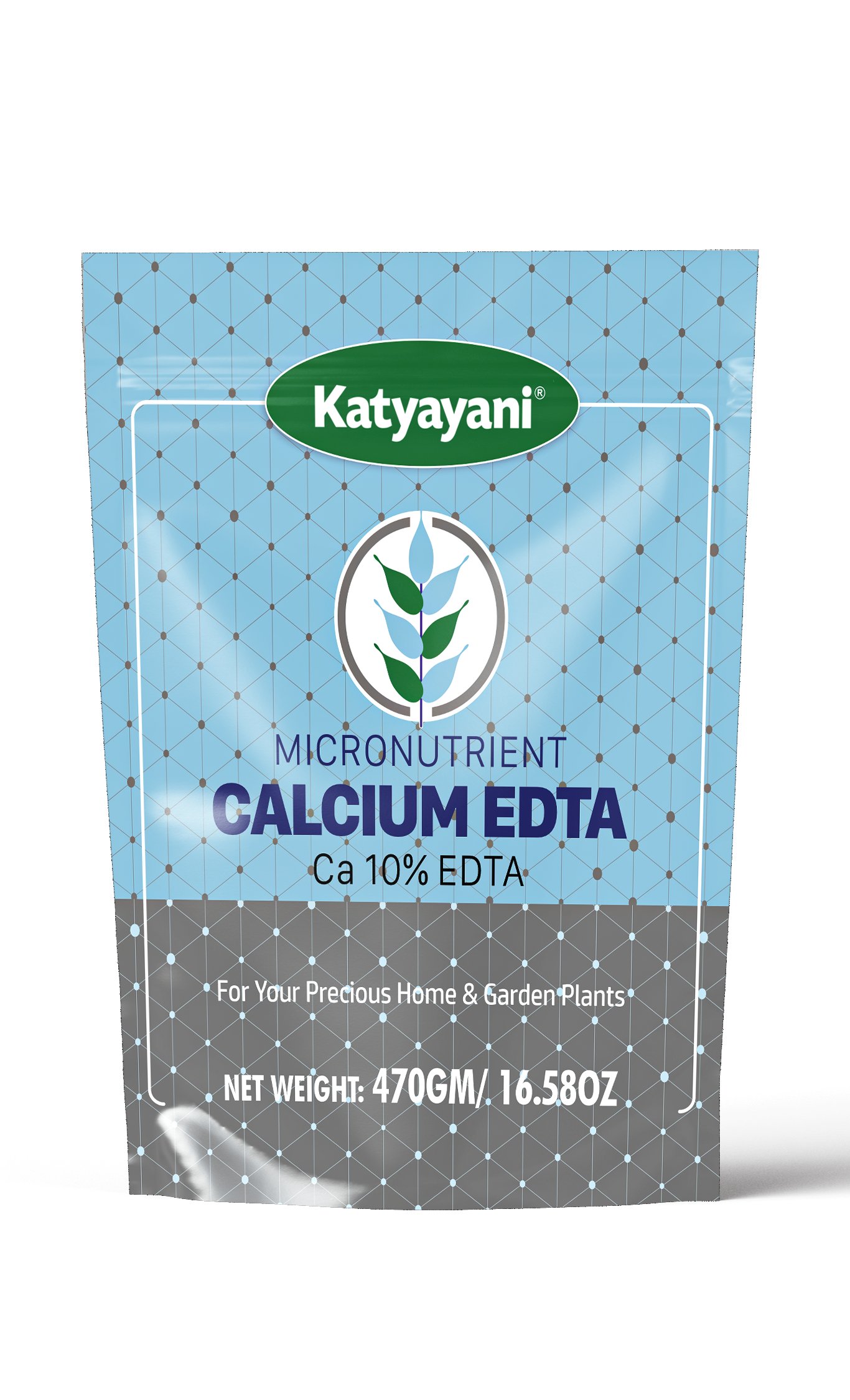Description
Bullet Point
- Katyayani Calcium EDTA contains 10% Chelated Calcium in EDTA. Its unique EDTA formulation makes it easily accessible to plants. It provides plants with calcium nutrients quickly and easily thus making it one of its kind.
- Katyayani Calcium EDTA is found to be effective in reducing frequency browning and shoot necrosis on crops, it hold cell wall together, Improve Metabolic activity (Enzyme Activator), Improve Plant Resistance,
- Many soils are deficient in their Calcium and Calcium being an essential element for crops growth thus resulting in soils suffering heavily which cause low yields. Foliar sprays of Chelated Calcium 10% helps the farmers to overcome this problem easily.
- Katyayani Calcium EDTA can be applied on any plant or crop suffering from calcium deficiency, some of the prominent symptoms of calcium deficiency are Regional tissue necrosis and reduced plant development, Premature shedding of blossoms and buds, tip burn,Young leaves with necrotic leaf edges or curling leaves, Terminal buds and root tips will eventually die.
- For best results on plants apply 0.5 to 1 gm of Katyayani Calcium 10% EDTA with one litre of water and 100 gms of Katyayani Calcium 10% EDTA for 1 Acre area coverage.
Long Description
Katyayani Calcium EDTA Contains 10% Chelated Calcium in EDTA form. Calcium is responsible for the structural and physiological stability of plant tissue and hence makes plant leaves green and healthy. In general Calcium EDTA reduces blossom end rot in the case of Tomato, reduces bitter pit in apples, etc. It increases the quality and yield in all crops.
For many years, commercial vegetable farmers have struggled with calcium insufficiency. The development of Ca-deficiency damage in plants is influenced by a number of factors.. First, several conditions influence Ca-uptake by plants such as the soil moisture content, the salt content of the soil solution, the oxygen content of the soil, soil temperature, the Ca-content of the soil, the cation/anion balance, and an inadequate rate of root production. Air temperature, CO2 concentration, photoperiod, radiation level, relative humidity (RH), and/or diurnal fluctuations in water potential as well as other parameters, influence the development of Ca-injury in plants. CO2 concentration, photoperiod, radiation level, relative humidity (RH), and/or diurnal fluctuations in water potential. Calcium is a necessary ingredient for plants.Calcium’s fundamental purpose in plant growth is to reinforce cell walls structurally. Because calcium is not transportable inside the plant, transpiration is slowed. Maintaining an ideal soil moisture level aids in the proper transport of calcium to the roots and into the plant. The young, affected leaves become necrotic, first at the tip, then throughout the rest of the leaf.
Symptoms of deficiency include:
- Regional tissue necrosis and reduced plant development.
- Premature shedding of blossoms and buds, tip burn etc.
- Young leaves with necrotic leaf edges or curling leaves.
- Terminal buds and root tips will eventually die.
- Because calcium accumulates to high concentrations in older leaves, new growth and fast expanding tissues of the plant are usually the first to be affected. Mature leaves are rarely, if ever, harmed.
- Plants with calcium shortages have shorter stems, fewer nodes, and less leaf area.
These deficiency symptoms can be controlled by “Katyayani Calcium EDTA 10%”
- Calcium EDTA is found to be effective to reduce frequency of explant browning and shoot necrosis on all raspberry cultivars.
- Calcium is in the form of calcium pectate and it is responsible for holding together the cell walls of plants.
- It is also used in activating certain enzymes and to send signals that coordinate certain cellular activities.
- Calcium contributes to soil fertility by helping maintain a flocculated clay and therefore with good aeration.
- Ca in plants leads to a breakdown of cell walls and membranes, susceptibility to a variety of diseases and post-harvest problems particularly in fresh produce such as apples.
- Plants need calcium for cell wall development and growth.
- Calcium is an essential element needed for growth and development of plants under both non-stressed and stress conditions.
DOSAGE :– 0.5 gms/L of water











Reviews
There are no reviews yet.